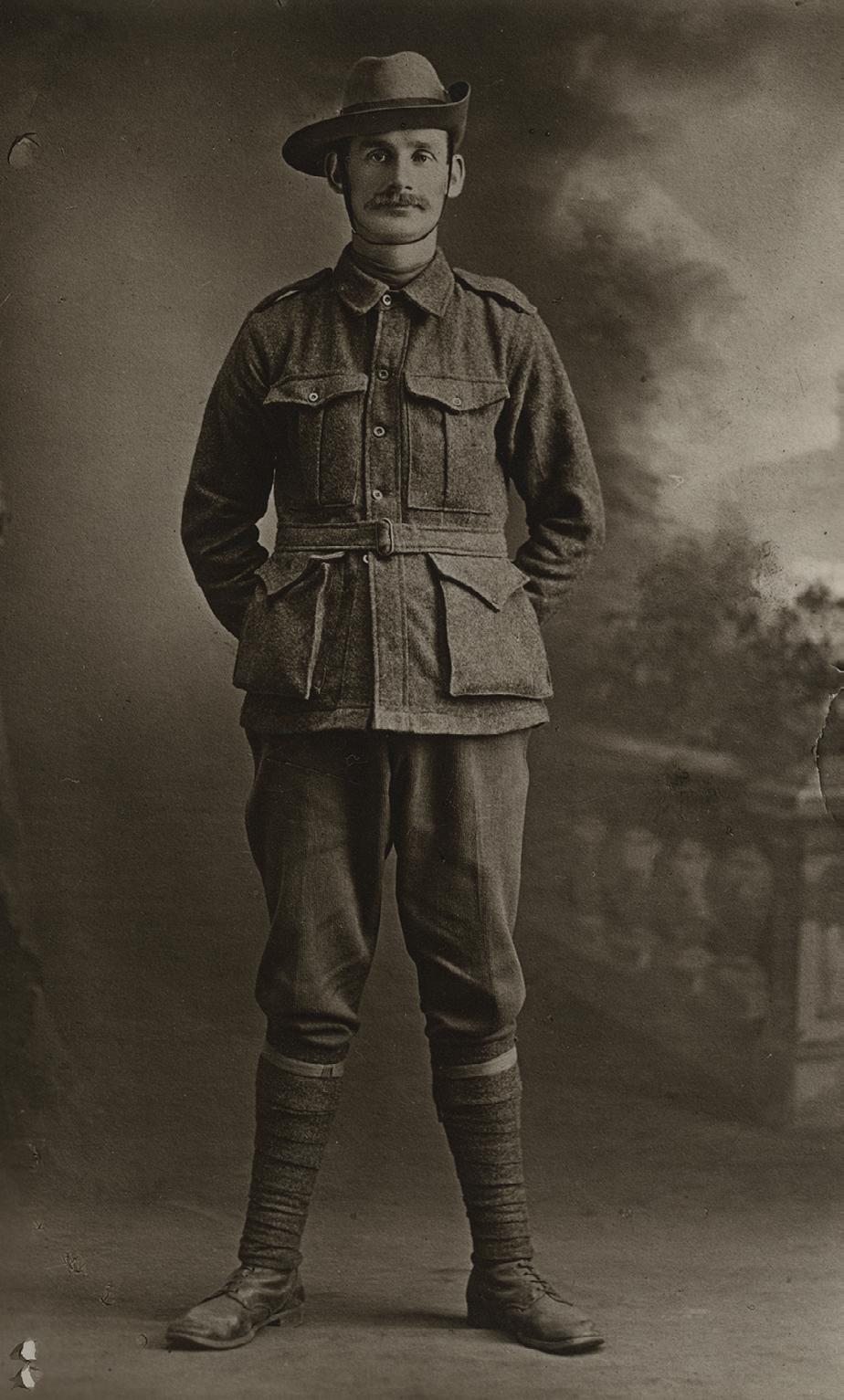
4 minute read
Frederick and John Buck
When the Australian Imperial Force called for experienced miners to join a specialised mining unit in early 1916, among those who answered were two brothers from Boulder, Western Australia.
John (Jack) Nicholas Buck, 39 years old, was single and employed as a miner and was known to be involved in local football. His brother Frederick (Fred) Thomas Buck was 32 years old and worked on the Associated Mine prior to enlisting. After the death of their father, the brothers lived with (and presumably supported) their widowed mother, Elizabeth.
After undertaking basic training at Blackboy Hill, near Perth, the brothers embarked together from Fremantle in June 1916 and reached the Western Front in August.
Unbeknownst to the brothers, their most deadly foe would not be the Germans, but an enemy inside themselves which had already begun to take hold prior to their enlistment.
Silicosis or ‘miner’s lung’ was endemic in Australia’s mining districts in the first half of the 20th Century and many a miner’s life was cruelly and painfully cut short by the deadly disease. Often too, women and young children were left to cope without a family breadwinner.
Poor conditions at the front aggravated the underlying disease in both men. For Fred, the damage already done to his lungs by silicosis was worsened by horrendous conditions at the front and being caught in a gas attack. Suffering through winter in the trenches in January 1917, Fred was admitted to hospital with bronchitis but was eventually diagnosed with tuberculosis. After spending some months in Harefield Hospital, England, Fred began the journey home to Australia on 4 May 1917.
Jack meanwhile was having struggles of his own. In April 1917 he was admitted to a casualty clearing station suffering from ‘debility’ and sent to England for further treatment. On 21 July 1917 he was returned to Australia in the hopes that his condition might be improved. On arrival in Australia, Jack was admitted to No. 8 Australian General Hospital, Fremantle and diagnosed with emphysema, bronchitis and an irregular heart.
Both brothers were discharged medically unfit in November 1917. Fred was admitted to Wooroloo Sanatorium, in the hills outside Perth. The clean country air was intended to ease the damage to his lungs and aid his recovery, however he died in Boulder on 30 October 1918, just a few weeks short of the end of the war.
Fred’s funeral, at the Kalgoorlie Cemetery on 1 November 1918, was attended by a large section of the community, including Jack, Elizabeth and many other family members. The ceremony took on a military character, comrades from the 3rd Tunnelling Company acting as pallbearers, a volley was fired over the grave and the last post was sounded.
Suffering from silicosis and other illnesses brought on by his war service, Jack passed away aged 44 on 23 August 1920. He was buried in the same grave in the Kalgoorlie Cemetery as his beloved brother. To compound the tragedy, Elizabeth Buck herself died a week after her son.
Today, the Buck brother’s shared grave in the Kalgoorlie Cemetery has an Australian War Graves headstone to mark the final resting place of two brothers who fought side by side and now rest eternally together.
The Goldfields War Museum in Kalgoorlie-Boulder, Western Australia proudly collects, conserves and shares the stories of military veterans from our region.
The City of Kalgoorlie-Boulder’s Local History Archives occupies the former civic offices of the Boulder Town Hall. A wealth of exceptional records and an on-site archivist and military historian can help researchers (and the curious) to uncover all aspects of local and military history as well as family connections to the Goldfields region.
The best way to experience the Boulder Town Hall and the Goldfields War Museum is via guided tours taking place on Tuesday and Thursday at 10:30am and on Thursday at 1:30pm respectively or by arrangement.
The Boulder Town Hall is open Monday–Friday 10:00am–4:00pm and Saturday 9:00am–1:00pm.









